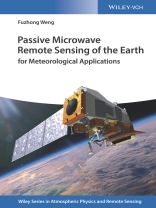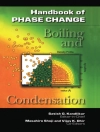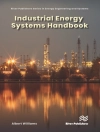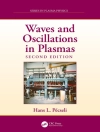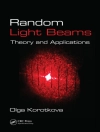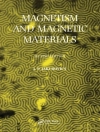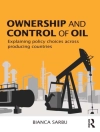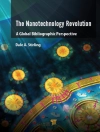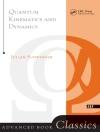This book covers the fundamentals of satellite microwave instrument calibration, remote sensing sciences and algorithms, as well as the applications of the satellite microwave observations in weather and climate research.
Table of Content
Preface XIII
1 Introduction 1
1.1 A Microwave Radiometer System 1
1.2 Blackbody Emission 3
1.3 Linearized Planck Function 4
1.4 Stokes Vector and Its Transformation 5
1.5 Microwave Spectrum 7
1.6 Spectral Response Function 8
1.7 Microwave Antenna Gain and Distribution Function 10
1.8 Microwave Instrument Scan Geometry 11
1.9 Microwave Data Records and Their Terminology 13
2 Atmospheric Absorption and Scattering 15
2.1 Introduction 15
2.2 Microwave Gaseous Absorption 16
2.2.1 Absorption Line and Shape 16
2.2.2 Oxygen Absorption 18
2.2.3 Water Vapor Absorption 22
2.2.4 Nitrogen and Ozone Absorption 23
2.2.5 Line-by-Line Radiative Transfer Model (LBLRTM) 23
2.2.6 Zeeman Splitting Absorption 24
2.2.7 Parameterized Transmittance Model 28
2.3 Cloud Absorption and Scattering 32
2.3.1 Scattering Parameters 32
2.3.2 Particle Size Distribution 34
2.3.3 Rayleigh Approximation 38
2.3.4 Henyey–Greenstein and Rayleigh Phase Matrix 42
2.4 Summary and Conclusions 44
3 Radiative Transfer Modeling at Microwave Frequencies 45
3.1 Introduction 45
3.2 Radiative Transfer Equation 45
3.3 Vector Discrete-Ordinate Method 47
3.4 Radiance Gradient or Jacobians 53
3.5 Benchmark Tests 55
3.6 The Zeroth-Order Approximation to Radiative Transfer Solution 60
3.7 The First-Order Approximation to Radiative Transfer Solution 62
3.8 Ocean Emissivity Model 62
3.8.1 Ocean Roughness Phenomena 62
3.8.2 Approximation of Water Dielectric Constant 64
3.8.3 Ocean Roughness Heights and Spectrum 67
3.8.4 Foam Coverage 73
3.8.5 Surface Emissivity Vector 74
3.9 Land Emissivity Model 78
3.9.1 Theoretical Approach for Land Emission 78
3.9.2 Optical Parameters of Vegetation Canopy 81
3.9.3 Optical Parameters of Snow 83
3.9.4 Surface Reflection at Layer Interfaces 85
3.9.5 Soil Dielectric Constant 87
3.9.6 Simulated Surface Emissivity Spectra 87
3.10 Summary and Conclusions 88
4 Microwave Radiance Simulations 91
4.1 Introduction 91
4.2 Fast Radiative Transfer Simulations 92
4.3 Calculations of Antenna Brightness Temperatures 96
4.4 Simulations of ATMS Sounding Channels Using Global Forecast Model Outputs 99
4.5 Simulations of ATMS Sounding Channels Using GPSRO Data 105
4.5.1 Collocation of GPS RO and ATMS Data 105
4.5.2 ATMS Bias with Respect to GPS RO Data 107
4.6 Uses of TRMM-Derived Hydrometeor Data in Radiative Transfer Simulations 109
4.6.1 Collocation of ATMS and TRMM Data 109
4.6.2 ATMS Biases With Respect to TRMM-Derived Simulations 112
4.7 Advanced Radiative Transfer Simulations 117
4.8 Summary and Conclusions 120
5 Calibration of Microwave Sounding Instruments 123
5.1 Introduction 123
5.2 Calibration Concept 124
5.3 ATMS Instrument Description 124
5.4 ATMS Radiometric Calibration 128
5.5 Impacts of ATMS Antenna Emission on Two-Point Calibration 133
5.6 Retrieval of Reflector Emissivity Using ATMS Pitch-Over Data 135
5.7 ATMS Noise-Equivalent Difference Temperature (NEDT) 138
5.8 Conversion from Antenna to Sensor Brightness Temperature 143
5.9 Summary and Conclusion 147
6 Detection of Interference Signals at Microwave Frequencies 151
6.1 Introduction 151
6.2 Microwave Imaging Radiometers and Data Sets 152
6.3 Radio-Frequency Interference Signals in Microwave Data 154
6.4 Detection of RFI over Land 155
6.4.1 Double Principal Component Analysis (DPCA) 155
6.4.2 Spectral Difference Method 160
6.5 RFI Detection over Oceans 162
6.6 Summary and Conclusions 175
7 Microwave Remote Sensing of Surface Parameters 177
7.1 Introduction 177
7.2 Remote Sensing of Ocean Surface Parameters 178
7.2.1 Retrievals of Surface Wind Vector 178
7.2.2 Simultaneous Retrieval of Sea Surface Temperature and Wind Speed 183
7.3 Remote Sensing of Land Surface Parameters 190
7.3.1 Retrievals of Land Surface Temperature 190
7.3.2 Retrieval of Land Surface Emissivity 195
7.3.3 Error Sensitivity of Land Surface Emissivity 198
7.3.4 Fast Land Emissivity Algorithms 202
7.4 Summary and Conclusions 205
8 Remote Sensing of Clouds from Microwave Sounding Instruments 207
8.1 Introduction 207
8.2 Remote Sensing of Cloud Liquid Water 208
8.2.1 Principle of Microwave Remote Sensing of Clouds 208
8.2.2 Cloud Liquid Water Algorithm 210
8.3 Remote Sensing of Cloud Ice Water 213
8.3.1 Microwave Scattering from Ice-Phase Cloud 213
8.3.2 Cloud Ice Water Retrieval Algorithm 216
8.4 Cloud Vertical Structures from Microwave Double Oxygen Bands 224
8.4.1 FY-3C Microwave Sounding Instruments and Their Channel Pairing 225
8.4.2 Typhoon Neoguri Observed by MWHS and MWTS 227
8.4.3 The Cloud Emission and Scattering Index (CESI) 230
8.5 Summary and Conclusions 232
9 Microwave Remote Sensing of Atmospheric Profiles 235
9.1 Introduction 235
9.2 Microwave Sounding Principle 236
9.3 Regression Algorithms 239
9.4 One-Dimensional Variational (1DVAR) Theory 244
9.5 Multiple 1DVARs for All-Weather Profiles 247
9.6 Microwave Integrated Retrieval System (MIRS) 251
9.7 Summary and Conclusions 257
10 Assimilation of Microwave Data in Regional NWP Models 259
10.1 Introduction 259
10.2 NCEP GSI Analysis System 260
10.3 ATMS Data Assimilation in HWRF 262
10.3.1 Hurricane Weather Research and Forecast (HWRF) System 262
10.3.2 Hurricane Events in 2012 264
10.3.3 ATMS Data Quality Control 266
10.3.4 Comparison between (O – B) and (O – A) Statistics 272
10.3.5 Impact of ATMS Data on Forecasting Track and Intensity 272
10.4 SSMIS Data Assimilation 282
10.4.1 SSMIS Instrument 282
10.4.2 SSMIS Data Quality Control 287
10.4.3 SSMIS Bias Correction 288
10.4.4 Impacts from SSMIS and AMSU-A Data Assimilation 293
10.4.5 Impact of SSMIS LAS Data on GFS Operational Forecasts 296
10.5 Summary and Conclusions 296
11 Applications of Microwave Data in Climate Studies 299
11.1 Introduction 299
11.2 Climate Trend Theory 300
11.3 A Long-Term Climate Data Record from SSM/I 303
11.3.1 Simultaneous Conical Overpassing (SCO) Method 304
11.3.2 Bias Characterization of Specific SSM/I Instrument 307
11.3.3 RADCAL Beacon Interference with F15 SSM/I 308
11.3.4 SSM/I Intersensor Bias Correction 310
11.3.5 Impact of Cross-Calibration on SSM/I SDR 313
11.3.6 Impacts of SSM/I Intersensor Calibration on TPW 315
11.4 A Long-Term Climate Data Record from MSU/AMSU 320
11.4.1 Impacts of Clouds and Precipitation on AMSU-A Trends 323
11.4.2 Emission and Scattering Effect on AMSU-A 323
11.4.3 AMSU-A Brightness Temperature Trend 326
11.5 Atmospheric Temperature Trend from 1DVar Retrieval 330
11.5.1 Climate Applications of 1DVar 330
11.5.2 MSU and AMSU-A Cross-Calibration 331
11.5.3 Cloud Detection Algorithm for MSU Applications 331
11.5.4 Temperature Trend from 1DVar 334
11.6 Summary and Conclusions 337
References 341
Index 359
About the author
Dr. Fuzhong Weng received his Ph D degree in 1992 from Department of Atmospheric Science, Colorado State University (CSU), Fort Collins, Colorado, USA. He joined NOAA in 1998 as a physical scientist and then managed the US Joint Center for Satellite Data Assimilation Program (JCSDA) from 2002-2005. He served as the chief of sensor physics branch at NOAA/NESDIS from 2005-2010. From 2011 to 2017, Dr. Weng was appointed as the chief of Satellite Meteorology and Climatology of NOAA/NESDIS/Center for Satellite Applications and Research, JCSDA Senior Scientist and Joint Polar Satellite System (JPSS) Sensor Science Chair. He won a number of awards including the first winner of the 2000 NOAA David Johnson Award for his outstanding contributions to satellite microwave remote sensing fields and the utilization of satellite data in the NWP models, US Department of Commerce Gold Medal Award in 2005 for his achievement in satellite data assimilation, NOAA bronze medal for leading successful NOAA-18 instrument calibration, and NOAA Administrator’s Award for developing new and powerful radiative transfer models to assimilate advanced satellite data in 2009 and NOAA Administrator’s Award for leadership in developing a state-of-the art satellite instrument health monitoring system enabling corrective actions to extend instrument life. He published over 160 papers in US and other international journals.
